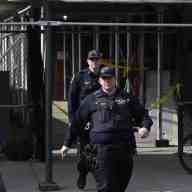Despite being born and raised in Maine, Michael Kamber is a dyed-in-the-wool Bronxite. When he moved to New York City to work as a photographer for the New York Times, Kamber put down his roots on Willis Avenue.
Kamber left the country in 2008 and split the next three years between Iraq and Afghanistan as a war correspondent. So when he returned to his homeland this winter, the 47-year-old Kamber knew the Bronx would be his destination.
Kamber didn’t just rent an apartment and go back to work. In February, he purchased the landmarked building at 614 Courtlandt Avenue for $675,000. Since then, he has been living there and using it to plot the opening of the Bronx Documentary Center.
He plans to use the four-story building to both screen documentaries and bring in student groups from all over the Bronx to learn from curriculums based on the films and photographs shown at the center. The BDC is scheduled to open in September.
Bronx schools, P.S. 1 and Immaculate Conception, as well as youth groups such as The Point in Hunts Point have already expressed interest in working with the BDC.
Kamber has one full-time employee at the BDC so far and five volunteers. Since so many of his ties to the Bronx community groups were cut off during his war reporting trip, Kamber has been relying on neighborhood friends to help spread the word about the BDC.
One such person has been Ed Garcia Conde, the self-described “Mayor of Melrose,” and proprietor of the welcome2melrose.com blog. Conde has put Kamber in touch with as many local educational organizations as possible.
“People’s reactions have been extremely positive,” Conde said. “There’s such a dearth of similar projects in the neighborhood and the Bronx in the general.”
The funding for the BDC project has come mainly from national arts non-profit Fractured Atlas. Kamber continues to work at the New York Times, and also puts his own money into the center.
He also has put his own manual labor into renovating the building, which had been vacant for 15 years. He is also making the building available as a residence for other documentary film makers and photojournalists.
The BDC has launched an outdoor film series this summer, showing documentaries in the building’s back yard and having directors come in for discussions.
Its first official, curriculum-oriented event in September will be based around the work of Tim Hetherington, a photojournalist most known for his film Restrepo about the war in Afghanistan. Hetherington was killed this April while covering the Libyan civil war.
Kamber encourages any youth group interested in working with the BDC to contact him through Fractured Atlas or the BDC’s Facebook page. And while students from everywhere are welcome, he says the more Bronxites, the better.
“I’ve found people in the Bronx are friendlier, you can barely walk down the street without someone saying hello,” he said. “Plus there is a sense of history here.”


















